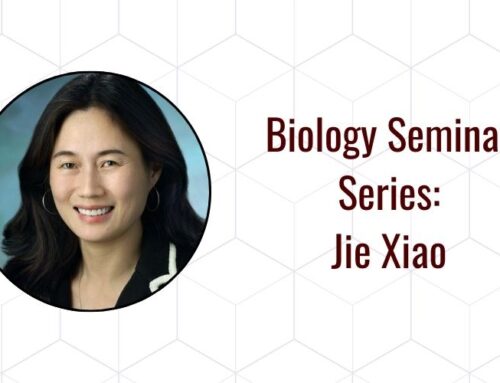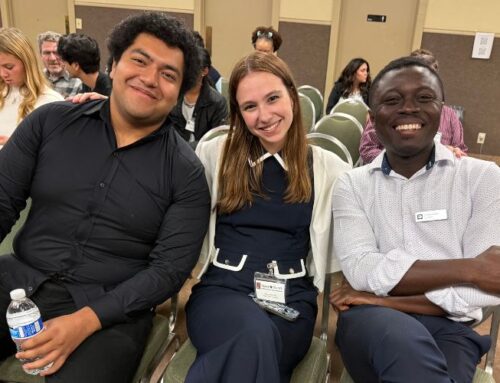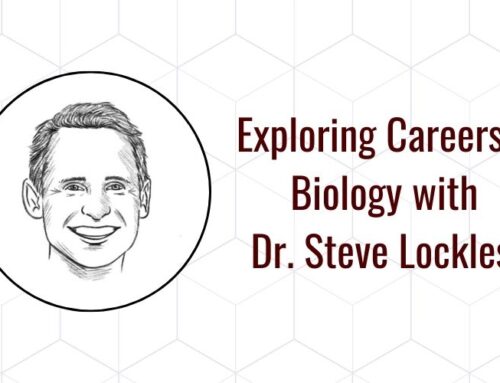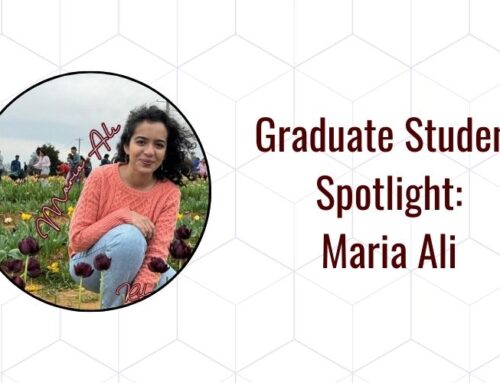Former Student Spotlight: Brie Myre
By: Duncan MacKenzie
The Department of Biology is proud to celebrate the publication of a study by former graduate student Dr. Brie Myre in collaboration with Dr. Duncan MacKenzie, Associate Professor Emeritus, Dr. Joe Bernardo, Research Associate Professor, and a team of undergraduate researchers from the Department of Biology at Texas A&M University. The study, titled “Anatomical evidence that arribada olive ridley sea turtles Lepidochelys olivacea feed at breeding and nesting grounds to maintain high reproductive output,” was published in Endangered Species Research: https://doi.org/10.3354/esr01360
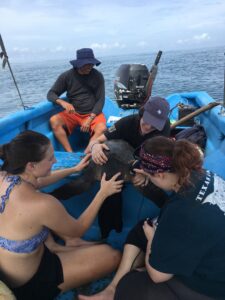 This innovative research reveals important insights into the feeding habits of olive ridley sea turtles during their reproductive cycle. Habitat destruction and incidental bycatch have impacted all sea turtle species, resulting in their threatened or endangered status. Adequate nutrition is essential for successful reproduction, yet little is known about the feeding behavior of sea turtles when on their nesting grounds. Traditional techniques for assessing nutritional state are invasive, labor-intensive, and potentially harmful to the animals. The difficulty of assessing nutrient intake in a highly migratory marine species called for the development of novel, less invasive approaches to determine when and where turtles are actively feeding. For her dissertation research, Myre proposed to determine whether minimally-invasive techniques such as ultrasound and blood analysis could provide an informative picture of a female turtle’s feeding state.
This innovative research reveals important insights into the feeding habits of olive ridley sea turtles during their reproductive cycle. Habitat destruction and incidental bycatch have impacted all sea turtle species, resulting in their threatened or endangered status. Adequate nutrition is essential for successful reproduction, yet little is known about the feeding behavior of sea turtles when on their nesting grounds. Traditional techniques for assessing nutritional state are invasive, labor-intensive, and potentially harmful to the animals. The difficulty of assessing nutrient intake in a highly migratory marine species called for the development of novel, less invasive approaches to determine when and where turtles are actively feeding. For her dissertation research, Myre proposed to determine whether minimally-invasive techniques such as ultrasound and blood analysis could provide an informative picture of a female turtle’s feeding state.
For the study, Myre recruited a team of TAMU undergraduate students who accompanied her on three field sampling trips to a renowned sea turtle nesting beach in Ostional, Costa Rica. During weeks of most intense nesting activity, they walked the beach all night to locate nesting females. For each turtle examined, they documented egg numbers, body sizes, and behaviors. Once she had finished depositing eggs, they were also able to collect blood samples and ultrasound images of subcutaneous fat. Once back in College Station, the undergraduate students continued work on the project by analyzing the ultrasound images and developing techniques to measure blood lipids.
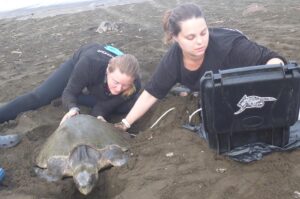 “Olive ridley sea turtles show a lot of interesting differences in their behavior and life cycle from the other turtles in their family”, says Myre. “I was able to show that olive ridleys feed at their nesting grounds, when other species use stored fat to make their eggs. This is important because it indicates that we need to manage food resources at nesting grounds for olive ridleys to lay the most possible eggs for species recovery.” In a follow-up paper based on Myre’s dissertation research, the group will show that blood lipid and hormone measurements also serve as informative indices of nutritional state. By providing evidence that these endangered turtles feed at their breeding and nesting grounds—a behavior that likely supports their remarkable reproductive output during mass nesting events known as arribadas—it highlights the importance of protecting breeding habitats to sustain sea turtle populations.
“Olive ridley sea turtles show a lot of interesting differences in their behavior and life cycle from the other turtles in their family”, says Myre. “I was able to show that olive ridleys feed at their nesting grounds, when other species use stored fat to make their eggs. This is important because it indicates that we need to manage food resources at nesting grounds for olive ridleys to lay the most possible eggs for species recovery.” In a follow-up paper based on Myre’s dissertation research, the group will show that blood lipid and hormone measurements also serve as informative indices of nutritional state. By providing evidence that these endangered turtles feed at their breeding and nesting grounds—a behavior that likely supports their remarkable reproductive output during mass nesting events known as arribadas—it highlights the importance of protecting breeding habitats to sustain sea turtle populations.
Dr. Myre’s work exemplifies the critical role that biologists play in advancing knowledge and addressing challenges facing endangered species worldwide. Dr. MacKenzie mentored Dr. Myre during her graduate studies, contributing his expertise in physiological ecology to the project. In turn, Dr. Myre directed both the field and laboratory research of eight undergraduate students, whose contributions were essential to the success of the project. Their collaboration underscores the impact of TAMU’s commitment to mentorship and scientific excellence, even beyond the conferral of degrees.


